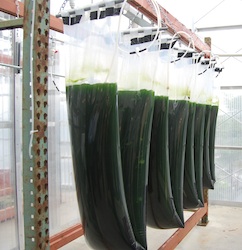A Buffalo, Minnesota fuel station is offering some Halloween treats for flex-fuel vehicle and diesel motorists this weekend.
 The Buffalo Holiday station is promoting E85 fuel with an 85 cent per gallon discount and B5 biodiesel with a 10 cent per gallon discount on Saturday, October 30, from 10 a.m. until noon. The purpose of the Halloween weekend promotion is to encourage the use of E85 and biodiesel, which reduces tailpipe emissions, air pollution and related health problems. There will also be in-store specials during the promotion.
The Buffalo Holiday station is promoting E85 fuel with an 85 cent per gallon discount and B5 biodiesel with a 10 cent per gallon discount on Saturday, October 30, from 10 a.m. until noon. The purpose of the Halloween weekend promotion is to encourage the use of E85 and biodiesel, which reduces tailpipe emissions, air pollution and related health problems. There will also be in-store specials during the promotion.
E85 is for use in flex fuel vehicles (FFVs) only. While there are more than 225,000 FFVs registered in Minnesota, not every owner is aware they have a choice at the pump, and that their car, van, SUV or truck can run on E85, gasoline, or any combinations of the two fuels. All diesel vehicles can use B5 biodiesel.
Supporters of the promotion include Holiday Companies, the Wright-Hennepin County Corn Growers, the Minnesota Corn Growers Association, the Minnesota Soybean Growers Association, the Clean Air Choice Team and the American Lung Association in Minnesota, which supports the use of E85 and biodiesel fuels as part of an overall strategy to reduce and prevent air pollution. For a complete listing of the 355+ E85 stations in Minnesota, as well as a list of all flex fuel vehicles that can use the ethanol-based fuel, visit www.CleanAirChoice.org.








 Following up on the biofuels initiatives that he announced last week, Agriculture Secretary Tom Vilsack visited
Following up on the biofuels initiatives that he announced last week, Agriculture Secretary Tom Vilsack visited  FUEL is a 100 million gallon per year corn-based ethanol plant with 860 mostly rural investors from the local Georgia-Florida area. “Most of the ethanol plants in the Midwest are ‘rubber in and rail out’ and we’re sort of ‘rail in and rubber out,'” Campbell says. While most of their corn comes in by rail from the Midwest, they are starting to buy more local corn as farmers in the agricultural area surrounding the plant are starting to put more corn back in their crop rotation with peanuts and cotton.
FUEL is a 100 million gallon per year corn-based ethanol plant with 860 mostly rural investors from the local Georgia-Florida area. “Most of the ethanol plants in the Midwest are ‘rubber in and rail out’ and we’re sort of ‘rail in and rubber out,'” Campbell says. While most of their corn comes in by rail from the Midwest, they are starting to buy more local corn as farmers in the agricultural area surrounding the plant are starting to put more corn back in their crop rotation with peanuts and cotton. In a
In a 